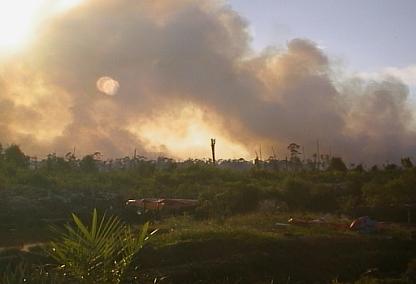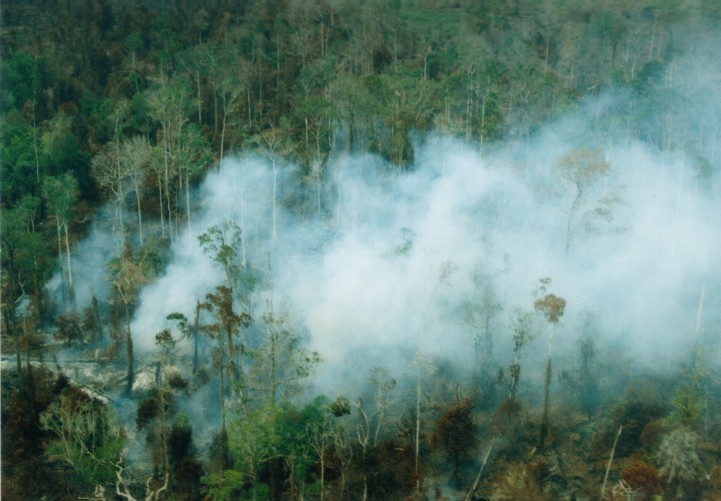


A living environment is a life-support system that must be protected and suatained by everyone for both today's gains and future generations' benefits.
| Fire Episodes in Klias Peninsula: the Aftermath | ||||||||||||||||||||||||
| The ecological and hydrological integrity of Klias wetlands is constantly under threat. The causes are numerous: land conversion and associated draining of farmlands are two prominent ones. The visible effects to the ecosystems are also numerous and ugly: they may result in outright habitat loss, degradation of the hydrological functions in adjoining forested areas, and collateral damage sustained due to the spread of wild-fires. Draining the land to control water movement is normally carried out as a pre-cursor to land development. Despite it being least understood, it is the most prefered economic means of land conversion. Unknowingly, such actiivities have affected the hydrological cycle of the adjoining peat forests. These uncontrolled human actions can easily obliterate the fragile environment, which mankind hinges upon. | ||||||||||||||||||||||||
| Fire is a constant threat to the survival of peat swamp ecosystem. | ||||||||||||||||||||||||
 |
||||||||||||||||||||||||
 |
||||||||||||||||||||||||
| Back to Personal Page | ||||||||||||||||||||||||
 |
||||||||||||||||||||||||
| The fires in Klias are not easy to manage. They occur (and are caused, nonetheless) when there is every opportunity for the elements of nature to turn ugly. This is prompted by the drying of debris, which act as ready fuel during the prolonged drought spells. A conflagration recently occured during the January-March dry spells. Local dailies reported a devastation of 3,000 hectares of peat swamp forests and sedge- and fern-infested areas in the Binsulok and Klias Forests, where unquantifiable losses had resulted. | ||||||||||||||||||||||||
| There is hope if these issues are addressed with a strong will to change and a passion to conserve, as well as a desire by the land-owners to be eco-friendly in their efforts to develop their land and hence, reduce the fire risks. The adage: prevention is better than cure is most apt in dealing with the fire episodes in Klias Peninsula. A living environment is a life-support system that must be protected and suatained by everyone for both today's gains and future generations' benefits. |
||||||||||||||||||||||||